BUDGET 2022 DECODED!
The PM Gati Shakti Master plan for expressways for faster movement of goods and people especially the announcement of 25000 Kms of highway construction in 2022-23 will help ensure sustained demand for Construction Equipment industry. Increased infrastructural activity has spin-off
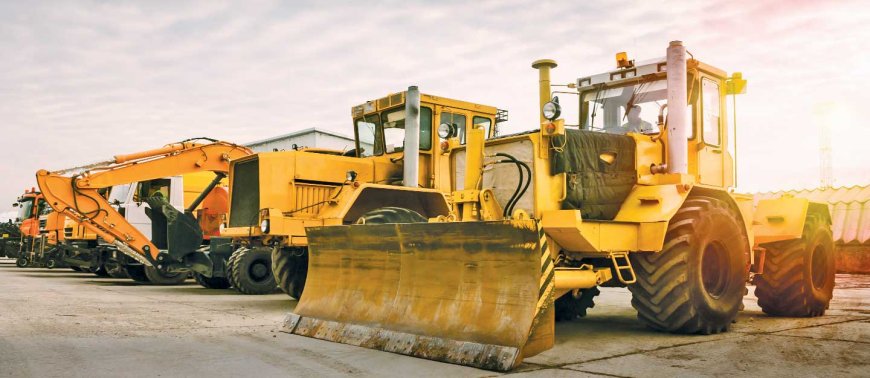
The PM Gati Shakti Master plan for expressways for faster movement of goods and people especially the announcement of 25000 Kms of highway construction in 2022-23 will help ensure sustained demand for Construction Equipment industry. Increased infrastructural activity has spin-off in terms of the consumption of cement and steel which are key inputs. The construction of new roads is also a cause for the construction equipment sector to cheer. Increased activity will also create more jobs, and in the context of issues over unemployment due to the pandemic, this assumes importance. Equipment Times decodes the Union Budget 2022 for the CE industry as it looks forward for the speedy implementation of the announced measures of the budget which can regenerate strong demand for construction equipment, which has been witnessing a slackening pace in the current fiscal year.
Finance Minister Nirmala Sitharaman last month presented the Union Budget 2022 in Parliament. While presenting the Budget, Nirmala Sitharaman announced that the country’s economic growth is expected to be at around 9.2 per cent in the current financial year.
The Union Budget of 39.45 trillion rupees for the coming fiscal year focused on stepping up investment on infrastructure and digitalisation to put growth on a firmer footing as the economy recovers from the Covid-19 pandemic.
Creation of jobs, a push for digital education, focus on mental health wellbeing, and preparations for new-age technologies such as blockchain and 5G services were among the highlights of Budget 2022.
In what was her shortest Budget speech ever, FM Nirmala Sitharaman did not have gifts in store for taxpayers as she announced no changes in the income tax slabs or hikes in exemptions. The other areas that Budget 2022 focused on was a push towards a greener economy and a boost for made-in-India initiatives via a higher defence spending on domestically produced equipment.
Finance Minister Nirmala Sitharaman in her Budget 2022 speech announced a slew of investments on infrastructure. On February 1, the finance minister said, “PM Gati Shakti is driven by seven engines i.e. roads, railways, airports, ports, mass transport, waterways and logistics infra. All seven engines will pull forward the economy in unison. Supported by energy transmission, IT communication, bulk water and sewerage and social infra.”
To boost the infrastructure sector, Sitharaman has allocated Rs 20,000 crore for national highway expansion. “In 2023, 25,000 km additional national highways will be constructed,” she said.
She also announced an allocation of Rs 44,000 crore on Ken Betwa river project.
Presenting the Union Budget 2022-23, Sitharaman said the government would lay the foundation for economic growth through public investment as the country is on the road to recovery amid the COVID-19 pandemic.
Apart from the highway expansion programme, she said that 400 new trains will be manufactured over the next three years.
According to the Economic Survey presented in Parliament on January 31, India needed to spend approximately $1.4 trillion over the next three to four years to achieve its ambitious $5 trillion GDP by financial year 2025.
The Economic Survey mentioned that although India pumped in $1.1 trillion on infrastructure between 2008 until 2017, it now needed to step up infrastructure investments substantially.
Increased Capex outlay for infrastructure development to drive demand for Construction Equipment: ICEMA
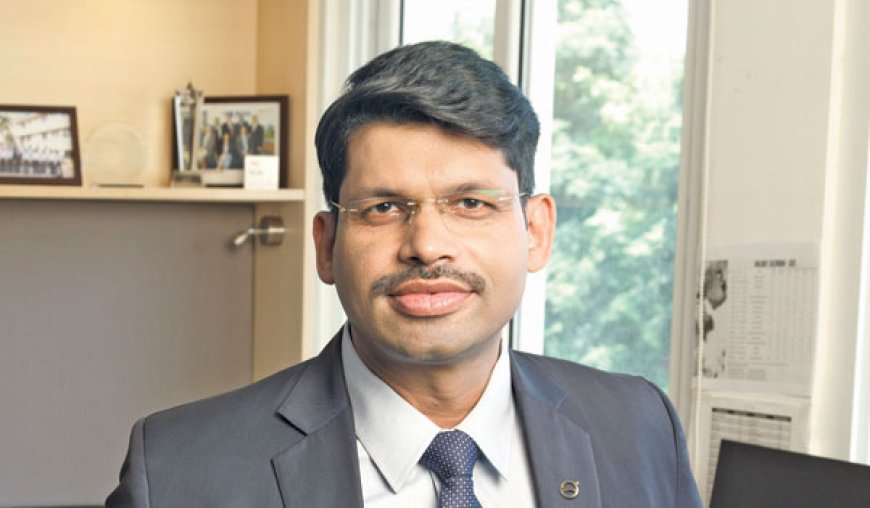 The finance minister has delivered an investment oriented budget that will drive infrastructure development with over 35% increase in capex outlay covering highway expansion, five river linking projects, last mile delivery of drinking water under Nal se Jal scheme, investment in railways, digital healthcare, affordable housing scheme, infrastructure development in Northeast and many other new initiatives, says Dimitrov Krishnan, President ICEMA and Managing Director, Volvo CE India.
The finance minister has delivered an investment oriented budget that will drive infrastructure development with over 35% increase in capex outlay covering highway expansion, five river linking projects, last mile delivery of drinking water under Nal se Jal scheme, investment in railways, digital healthcare, affordable housing scheme, infrastructure development in Northeast and many other new initiatives, says Dimitrov Krishnan, President ICEMA and Managing Director, Volvo CE India.
“The PM Gati Shakti Master plan for expressways for faster movement of goods and people especially the announcement of 25000 Kms of highway construction in 2022-23 will help ensure sustained demand for Construction Equipment industry”, he further added.
In the ICEMA Vision Plan 2030, sustained demand creation has been identified as one of the 3 pillars of growth for the CE industry which can help the sector increase its market size by 3 times to touch US$ 25 billion by 2030.
“The CE industry looks forward to speedy implementation of the announced measures that will then regenerate strong demand for Construction Equipment which has been witnessing a slackening pace in the current fiscal year,” said Krishnan.
The industry also welcomed the government’s efforts to mitigate the financial challenges of the MSME sector which has been amongst the worst hit from the ongoing pandemic. “The pandemic induced slowdown has posed severe liquidity challenges for the MSMEs which are an important stakeholder of the CE industry. The extension of the ECLGS scheme till March 2023, revamping of Credit Guarantee Trust for Micro and Small Enterprises (CGTMSE) and rolling out of Raising and Accelerating MSME Performance (RAMP) programme will provide the much-needed support to this critical sector,” added Krishnan.
While thanking the Government for addressing some of the key concerns of the CE industry in the budget, Dimitrov Krishnan highlighted the need to provide a robust ecosystem to the CE sector, enabling it to support the government’s ambitious infrastructure development plans. Towards this, he reiterated the request for granting priority sector status to the CE sector or treating it at par with the infrastructure sector to help attract long term funds, and also a dedicated PLI scheme which will help attract further investments, promote indigenisation, enhance production and boost exports. The industry also hopes that the State development fund of Rs.1 Lakh crore would be utilised also for rural roads & infrastructure development. We look forward to the Government’s support to our efforts of Shaping India’s tomorrow and making India a global manufacturing and export hub for construction equipment.
Industry leaders give thumbs up!
 The pandemic-triggered slowdown along with a cautious approach adopted by financers had hit the industry hard, says Arvind K Garg, Executive Vice President & Head, L&T Construction & Mining Machinery.
The pandemic-triggered slowdown along with a cautious approach adopted by financers had hit the industry hard, says Arvind K Garg, Executive Vice President & Head, L&T Construction & Mining Machinery.
“The announcement of increase in planned outlays towards the Pradhan Mantri Awas Yojana, expansion of National Highways by 25,000 km, Ken-Betwa River linking project along with boost from the seven engines of Gati Shakti are important measures which will create positive sentiments and spur economic growth to support increased demand for Construction & Mining Equipment, helping India realize her vision of emerging as the second largest CE market in the world, during this decade. The extension of ECLGS Scheme would help small businesses and give a boost to the MSME Sector, which will be favorable for a large number of our mid-sized customers in the Construction & Mining Machinery segment.”
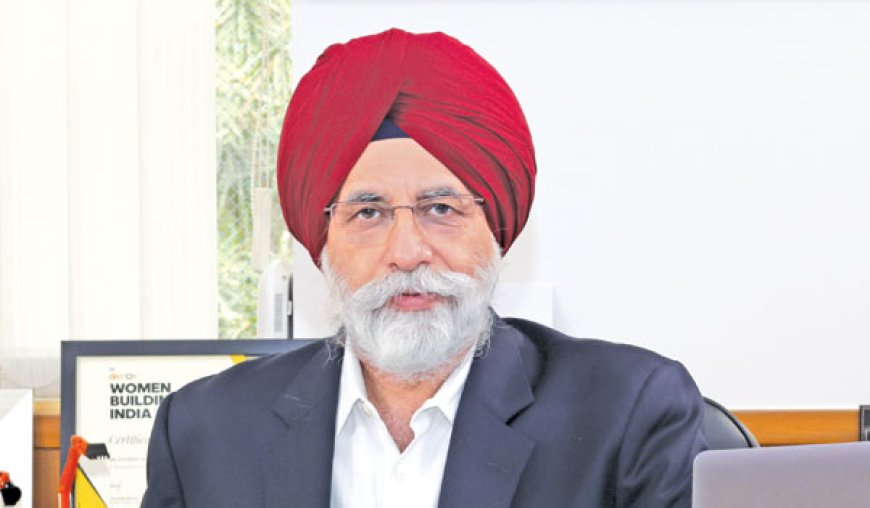 Sandeep Singh, Managing Director – Tata Hitachi Construction Machinery Company, said, “The union budget 2022-23 has demonstrated continuity and consistency over the previous year, with focus of driving growth by increasing Capex. The Capex allocation that has increased by 35%, at Rs.7.5 lakh crores, is highly encouraging. Key highlights of the budget allocation and the key demand drivers include: Roads and Highways are up from Rs 1.96L crores to Rs. 2L crores, Water resources driven by Jal Jeevan Mission has increased 33% from Rs. 45,000 to Rs. 60,000 crores, PM Gram Sadak Yojana has gone up 36% from Rs. 14,000 to Rs. 19,000 crores, Swachh Bharat Mission is up 19% from Rs. 8,000 to Rs. 9,500 crores, Railways including borrowings is up 14% from Rs. 2.15L crores to Rs. 2.46L crores There are also increases in PM Awas Yojana, Metro Rail, AMRUT and Smart cities.
Sandeep Singh, Managing Director – Tata Hitachi Construction Machinery Company, said, “The union budget 2022-23 has demonstrated continuity and consistency over the previous year, with focus of driving growth by increasing Capex. The Capex allocation that has increased by 35%, at Rs.7.5 lakh crores, is highly encouraging. Key highlights of the budget allocation and the key demand drivers include: Roads and Highways are up from Rs 1.96L crores to Rs. 2L crores, Water resources driven by Jal Jeevan Mission has increased 33% from Rs. 45,000 to Rs. 60,000 crores, PM Gram Sadak Yojana has gone up 36% from Rs. 14,000 to Rs. 19,000 crores, Swachh Bharat Mission is up 19% from Rs. 8,000 to Rs. 9,500 crores, Railways including borrowings is up 14% from Rs. 2.15L crores to Rs. 2.46L crores There are also increases in PM Awas Yojana, Metro Rail, AMRUT and Smart cities.
Further the proportion of greenfield multilane highways, and the PM Gatishakti Master plan for Expressway being formulated, the increased intensity of CE deployment in these projects will further add to the demand. An announcement of start of the Ken-Betwa river linking project has also been made. Prime Minister’s Development Initiative for North East Region will fund infrastructure and Rs. 1,500 crores have been allotted for the same. The government has also taken note of liquidity issues and has stated that payment of 75% of bills for procurement by Govt agencies will be paid within 10 days.
The above measures have great potential to unlock new opportunities for the CE industry in FY 2022-23. The real opportunity for the CE sector continues to be in proper and timely execution of projects, which is a challenge being faced currently. Government agencies need to focus on accelerating execution that has a higher impact on demand for CE.
When asked about how this budget will help in pushing investments in the infrastructure, construction and mining space especially after a stagnant period of the Covid-19 pandemic, Singh said, “FY 2020-21 – the year of the pandemic – saw CE demand grow by 9% over 2019-20, with a rapid recovery in the second half of the year. This was driven by various co-ordinated measures taken by the government to increase liquidity, access to finance, as well as thrust in rural infra and record highway construction of 37 km per day. From this level, we are currently seeing demand compression in various segments of the CE market this year. Demand is down by nearly 4% YoY from the impact of 2nd wave of Covid19 during early part of the year. Highway construction has slowed down to 21km a day, from 35 km a day in the previous year, impacting demand, especially for excavators and road construction machinery.
In this environment, the government is trying to re-energise growth through increased capex in infrastructure. This is expected to attract private investment in infrastructure projects. To add to this, NHAI is focusing more on constructing highways through HAM and auctioning completed EPC projects through InvITs and ToT. NHAI is also monetising projects through SPVs. The real estate sector which has been depressed for many years now, has clearly bottomed out in most parts of the country and is now starting to look up. With increased urbanisation and the growth of the well-paid IT sector, demand for housing in metros is showing significant improvement. The various PLIs announced are also likely to boost demand. In addition, Coal India Limited is heading for record production. All these factors should help in pushing investments in these sectors helping revive demand for CE.
The finance Minister, in her budget speech, has stated that National highways in India will be expanded by 25,000 km during 2022-23. Explaining the impact of this on the CE sector in terms of skilled employment as well as from business generation, Singh further added, “The finance minister in the Union Budget said the National Highways network will be expanded by 25,000 km in 2022-23. We believe that this includes expansion of existing national highway network of 1.41 lakh kms. Having said that, with the increased investment in highway construction as announced in the budget, and the target to complete Bharatmala by 2025, should enable a growth in CE like excavators, wheel loaders, road construction equipment, and crushers. This will drive enhanced employment by the CE sector as well.
In view of the increase in demand for CE operators and mechanics in future, and on account of safety requirements regarding operation of construction equipment, we believe that the government should look at graded mandatory certification of operators.”
Commenting on the Union Budget 2022, Sandeep Mathur, India General Manager, Business Head, India & SAARC – Construction Equipment – CNH Industrial, said, “The Union Budget has brought the focus back on Bharat. Building further on India’s infrastructure requirements will have a tremendous effect on achieving sustainable growth for the economy and will have an exceptional positive social impact. The transformative approach for economic growth in the infrastructure sector driven by seven engines – roads, railways, airports, ports, mass transport, waterways and logistics infrastructure – is a smart move with an eye towards achieving long-term goals. The announcement regarding aligning National Infrastructure Pipeline with Gati Shakti Master Plan will certainly give an edge to the Indian economy, encouraging smooth and seamless urban development in the nation. Additionally, the government’s continuous investment in expanding the national Highway network by 25,000 km in 2022-23 by mobilizing INR 20,000 crore will also be enormously beneficial for the infrastructure sector.”
The major highlight of the announcements made in the budget for us is the Big infra spending boost of Rs. 7.5 Lac crores in financial year 2022 – 23, says Deepak Garg, MD, Sany India & South Asia.
“Provision for Rs. 1 lac crores – 50 year interest free loans to state government over and above the current limit will surely put more money in the hands of the state government to increase spending on infrastructure development. Green bonds announced in the budget session also look very promising in order to reduce the carbon intensity of our economy. Increasing impetus given on the 7 engines of growth in the Pradhan Mantri Gaati Shakti program shows the government’s commitment towards rapid 360 degree growth in the overall infrastructure sector. Some key measures announced in the budget are a definitive step towards this goal. Expanding highways by 25000KMS, which is nearly 83 kms a day, will prove to be a major growth booster for our economy. Similarly, Multi modal logistics facilities were previously not given the due attention it needed but thankfully today’s budget seems to have changed this trend with the announcement of construction of 100 cargo terminals in the next 3 years.”
Deepak further added, “With the allocation of Rs. 48000 crores for the Pradhan Mantri Aavas Yojana, we are hopeful that the Government’s commitment towards providing affordable housing will soon turn into a reality. Besides housing, drinking water is an essential need for everyone and allocation of Rs. 60000 crores towards drinking water projects will not only benefit the common man but positively impact the infrastructure sector and pipeline industries as well. Other significant announcements like Modern Infra for India at 100 with multi modal approach, Energy Transition, climate action to fuel sustainable development etc. indicates that this year’s budget is dedicated to infrastructure development and is forward looking in every sense of the word.”
 Ramesh Palagiri – MD & CEO – Wirtgen India, said, “The budget has increased allocation for Infrastructure with focus on Roads & Railways. Both national highways and rural roads have been given priority. This should translate to more demand for construction equipment in FY 2023, however the implementation risks continue and this could dampen demand as it is currently the case.”
Ramesh Palagiri – MD & CEO – Wirtgen India, said, “The budget has increased allocation for Infrastructure with focus on Roads & Railways. Both national highways and rural roads have been given priority. This should translate to more demand for construction equipment in FY 2023, however the implementation risks continue and this could dampen demand as it is currently the case.”
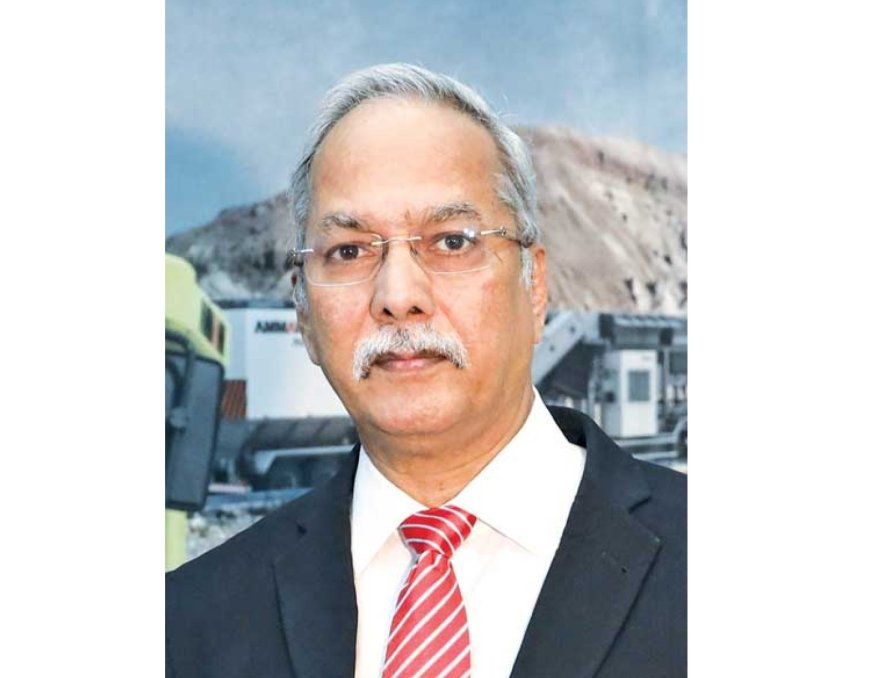 Anand Sundaresan, Managing Director, Ammann India, said, “Many infrastructure construction projects has been announced in this budget. Last couple of years has been very challenging for construction equipment industry. It is sincerely hoped that all the projects announced will be implemented at the earliest, which will help the CE Industry. The budget points out many initiatives like PPP projects, significant support to the State to revive capex by State Government, use of surety bonds from Insurance as a substitute for bank guarantee, speedy dispute resolutions etc. will help in infrastructure development.”
Anand Sundaresan, Managing Director, Ammann India, said, “Many infrastructure construction projects has been announced in this budget. Last couple of years has been very challenging for construction equipment industry. It is sincerely hoped that all the projects announced will be implemented at the earliest, which will help the CE Industry. The budget points out many initiatives like PPP projects, significant support to the State to revive capex by State Government, use of surety bonds from Insurance as a substitute for bank guarantee, speedy dispute resolutions etc. will help in infrastructure development.”
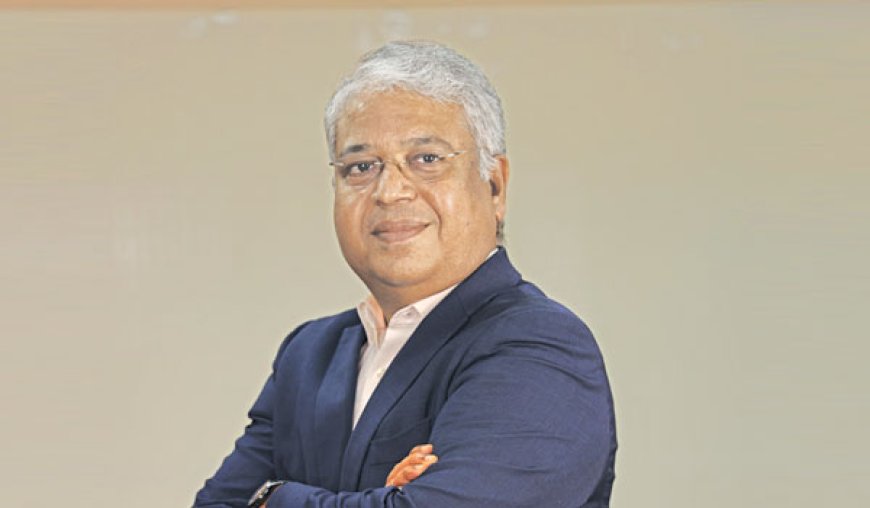 V.G. Sakthikumar, Managing Director of Schwing Stetter India, said, “This year’s budget is a welcome budget. Infact, in 2019 also, I felt that it was a good budget because they brought in liquidity. We have to appreciate the budget as they are committing 35% more investment on infrastructure. They are taking care of the MSMEs in terms of extending all the credit lines. Especially the infrastructure dependent companies are also happy. This year’s budget talks about river interconnection, further phases of Metro lines, new airports, and new railway stations – everything needs concrete and so, there is enough business. Infrastructure boom will be very much high this year.
V.G. Sakthikumar, Managing Director of Schwing Stetter India, said, “This year’s budget is a welcome budget. Infact, in 2019 also, I felt that it was a good budget because they brought in liquidity. We have to appreciate the budget as they are committing 35% more investment on infrastructure. They are taking care of the MSMEs in terms of extending all the credit lines. Especially the infrastructure dependent companies are also happy. This year’s budget talks about river interconnection, further phases of Metro lines, new airports, and new railway stations – everything needs concrete and so, there is enough business. Infrastructure boom will be very much high this year.
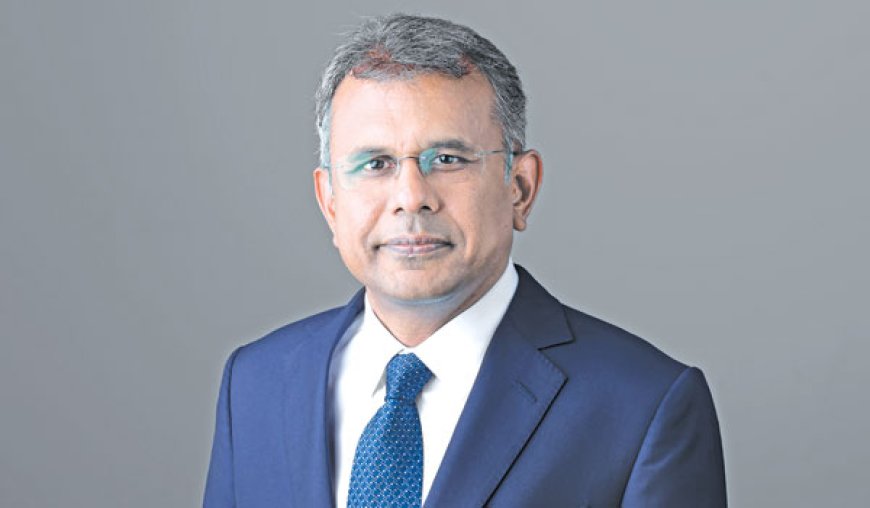 V. Senthilkumar, Managing Director, Propel Industries, said, “The Union Buget 2022 is a positive step ahead in the government’s long term vision of making India a $5 trillion economy by 2025. This vision will require a spending of around $1.4 trillion for infrastructure in the same period. The National Infrastructure Project(NIP) has been expanded to cover 9000 projects covering 34 infrastructure sectors and is following a coordinated technology driven approach involving all stakeholders. This auger well for the long term prospects of the CE industry, there will be a steady increase in demand for construction equipment and the industry is poised for tremendous growth. The key however will be good implementation; India fell short of targets in the first 3 years of the NIP calendar. But given the government’s strong focus on infrastructure as an engine for overall growth of the economy we are confident that the path ahead is very bright for the CE industry in India.”
V. Senthilkumar, Managing Director, Propel Industries, said, “The Union Buget 2022 is a positive step ahead in the government’s long term vision of making India a $5 trillion economy by 2025. This vision will require a spending of around $1.4 trillion for infrastructure in the same period. The National Infrastructure Project(NIP) has been expanded to cover 9000 projects covering 34 infrastructure sectors and is following a coordinated technology driven approach involving all stakeholders. This auger well for the long term prospects of the CE industry, there will be a steady increase in demand for construction equipment and the industry is poised for tremendous growth. The key however will be good implementation; India fell short of targets in the first 3 years of the NIP calendar. But given the government’s strong focus on infrastructure as an engine for overall growth of the economy we are confident that the path ahead is very bright for the CE industry in India.”
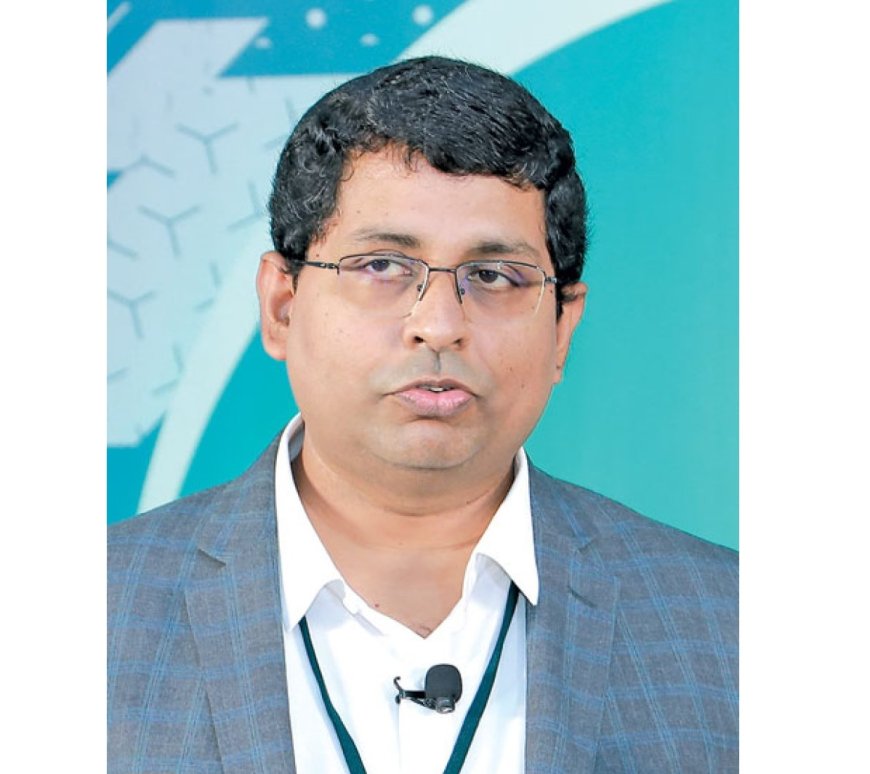 Jaideep Shekhar, Managing Director, Terex India, said, “Despite the backdrop of the huge fiscal deficit of 9.5 % for FY21 and an estimated deficit of 6.8 % in FY22, Budget 2022’s emphasis on the National Gati Shakti Plan are a welcome move for the sector and is a landmark step towards enabling progressive economic growth in India. This will also give much-needed boost to infrastructure development across India while also driving economic growth. The mining space should see a positive impact with the government’s plan to shift to a carbon-neutral economy, push on infrastructure through the PM Gati Shakti scheme and a significant increase on capital spend budget. We are committed to focusing on sustainable infrastructure development and strive to provide sustainable solutions that aim to reduce our overall carbon footprint and have recently launched machines with fuel-efficient hybrid dual-powered technology.”
Jaideep Shekhar, Managing Director, Terex India, said, “Despite the backdrop of the huge fiscal deficit of 9.5 % for FY21 and an estimated deficit of 6.8 % in FY22, Budget 2022’s emphasis on the National Gati Shakti Plan are a welcome move for the sector and is a landmark step towards enabling progressive economic growth in India. This will also give much-needed boost to infrastructure development across India while also driving economic growth. The mining space should see a positive impact with the government’s plan to shift to a carbon-neutral economy, push on infrastructure through the PM Gati Shakti scheme and a significant increase on capital spend budget. We are committed to focusing on sustainable infrastructure development and strive to provide sustainable solutions that aim to reduce our overall carbon footprint and have recently launched machines with fuel-efficient hybrid dual-powered technology.”
According to E. Moses, Vice President – Division & National Head, Kobelco Construction Equipment India, “The announcement is quite welcome though somewhat ambitious considering the current pace of road construction. It will certainly provide a big boost to the CE industry and support its demand upswing. However, the situation with respect to skilling is not very clear. The Govt. had taken strong steps to push for skilling in this sector but the effort seems to have lost steam in recent years due to some serious issues which have remained unresolved. Firstly, there is no clear mandate for employing only certified Operators, primarily because there is a shortage of certified Operators and issuing a mandate may hamper work across various time-bound Projects. Not having a mandate, leads to a very lean demand for training programs. Private players are also shy of being a part of the skilling eco-system. Moreover, employers are not willing to pay higher to certified Operators if they continue with the same organization. They are reluctant to nominate their existing Operators for skilling & certification for fear of losing them to other employers who may be willing to pay more.”
Satyakam Arya – Managing Director & CEO, Daimler India Commercial Vehicles, said, “Fundamentally, the FY 2022-23 budget focuses on providing growth to the economy. We have already started to see some green shoots in the economic recovery and therefore a budget focused on that is a welcome step. The honorable FM has also not taken an aggressive target on reducing the fiscal deficit and, this also provides the headroom for spending and capital expenditure to enable the growth momentum on sustainable basis. Some of the highlights are 35.4% increase in CAPEX outlay to INR 7.5 lakh crore, the high-level fiscal target of 6.4% for 2022-23, a sharper focus on building road infrastructure and logistics and a bigger push towards e-Mobility are big boosts for the economy.”
Speaking on the infrastructure and logistics, Arya said, “I am pleased to see the various measures announced to boost the Road Infrastructure and Logistics sectors that should keep the Commercial Vehicles industry on a positive trend this financial year. The 25,000 km expansion of the national highway network, multi-modal national park contracts and the 100 GatiShakti terminal contracts should generate greater demand for the Commercial Vehicles in the market in FY23 as well as FY24. FY22 was a recovery year for DICV and we did anticipate that FY23 will be positive for us and it seems to be, taking references from the FY23 budget. It is also heartening to see a greater thrust towards improving the logistics efficiency based on digitalization, creation of multimodal logistic parts and cargo terminals. This will not only help the logistics industry but will also provide much needed and enhanced cost competitiveness to the entire manufacturing sector.”
Commenting on the housing and urban development, he further added, “The allocation of Rs. 48,000 crore for the PM Awaas Yojana is also a welcome move for it will have a positive impact on the Commercial Vehicles industry, given that 80 lakh houses are planned in FY23, for urban and rural beneficiaries under the scheme. There is definitely a sharper focus on e-Mobility as per the FY23 budget. It will be interesting to see the special Mobility zones for electric vehicles. The Hon. Finance Minister’s comments on battery swapping and interoperability is certainly the right direction to take. We will however, need to look at the GST rate for charging and swapping as a service going forward. The indication that unblended fuel will attract additional duty of Rs. 2 per litre may put pressure on the current auto industry environment, at the same time will hasten the transition to blended fuels. Positives also are the extension of PLI to promote solar power generation and that energy storage and charging infrastructure are categorized under ‘infrastructure’ when this is indeed the future.”
GST collection of Rs. 1.4 lakh crore is a great indicator of the economic recovery and commitment of industries and business communities towards nation building. Having said that, the focus on direct taxation could have been better to increase overall consumption. On the other side, increase in consumption amidst constrained supply chain environment may also add further to the inflationary trend, which is best avoided at this stage. Revamping of the SEZ laws for export promotion and enhancing competitiveness of export looks promising. Likewise, steps to reduce litigation is also a welcome step, however, some more concrete steps towards ease of business and ease of compliance would have been helpful.”
‘This budget should definitely boost the construction equipment demand’
The government has continued with its focus on infrastructure development and capital expenditure in the proposed budget for the next year. This should definitely boost the construction equipment demand, says Samir Bansal, General Manager-India, Off-Highway Research speaking about Union Budget 2022 – 23 unlocking opportunities for India’s CE industry, even as the government aspires to grow Indian economy to $5 trillion by 2025.
When asked about how this budget will help in pushing investments in the infrastructure, construction and mining space especially after a stagnant period of the Covid-19 pandemic, Bansal said, “Proposed investments are higher compared even to the revised estimates (higher than the budgeted estimates despite second and third wave of Covid) for the current financial year ending March 2022.”
He also said that roads has been the most important driver for construction equipment demand for the last 5-6 years and the 25,000 kilometers target works out to an unprecedented 83 kilometers/day (considering 300 working days/year), nearly double of the highest that has been achieved till day. Therefore, the sector has the potential to generate enormous demand for construction equipment and employment.
Commenting on the present challenges and the road ahead for CE industry, Bansal said, “Proposed investments in to the roads sector would generate a great stress on production capability of the manufacturers due to supply chain issues and capacity constraints. Availability of skilled operation and maintenance manpower will also be a big challenge for the sector although OEMs and the industry are trying their best to address the issue.”
 Mayank Agrawal, Sector Head and Assistant Vice President, Corporate Sector Ratings, ICRA, said, “The capital expenditure in key infrastructure segments like railways has been budgeted to increase to Rs. 2.45 trillion in FY23 BE (increased by 14% over FY22 BE), Roads and Highways to Rs. 2.08 trillion (marginally higher by 4.8% over FY22 BE), while that of metro and MRTS projects has been stagnant at Rs. 191 billion. Drinking water supply has also seen growth in allocation under the Jal Jeevan Mission with allocation increased to Rs. 60,000 crore in FY23 BE (from Rs. 45,000 in FY22 BE). Additional allocation to the PM Awas Yojna will also favour the overall growth of construction industry and in turn the CE industry.”
Mayank Agrawal, Sector Head and Assistant Vice President, Corporate Sector Ratings, ICRA, said, “The capital expenditure in key infrastructure segments like railways has been budgeted to increase to Rs. 2.45 trillion in FY23 BE (increased by 14% over FY22 BE), Roads and Highways to Rs. 2.08 trillion (marginally higher by 4.8% over FY22 BE), while that of metro and MRTS projects has been stagnant at Rs. 191 billion. Drinking water supply has also seen growth in allocation under the Jal Jeevan Mission with allocation increased to Rs. 60,000 crore in FY23 BE (from Rs. 45,000 in FY22 BE). Additional allocation to the PM Awas Yojna will also favour the overall growth of construction industry and in turn the CE industry.”
Hits: 1








